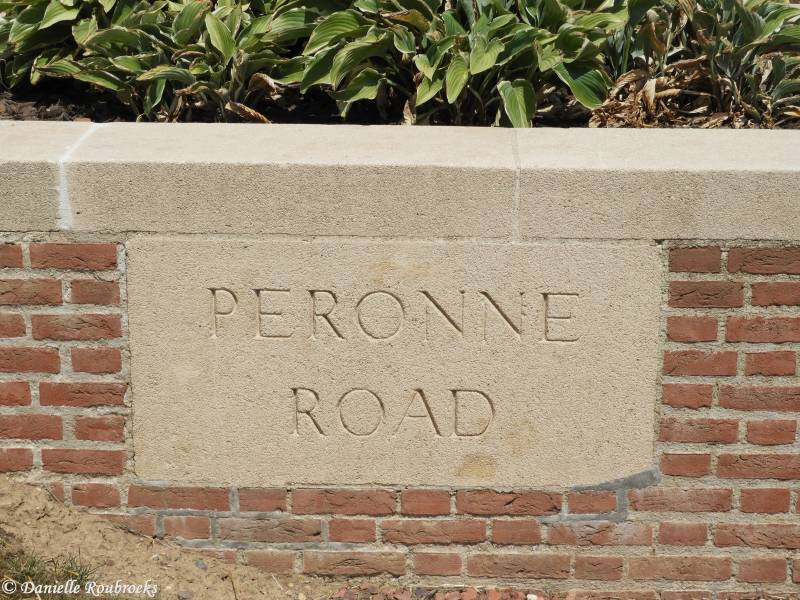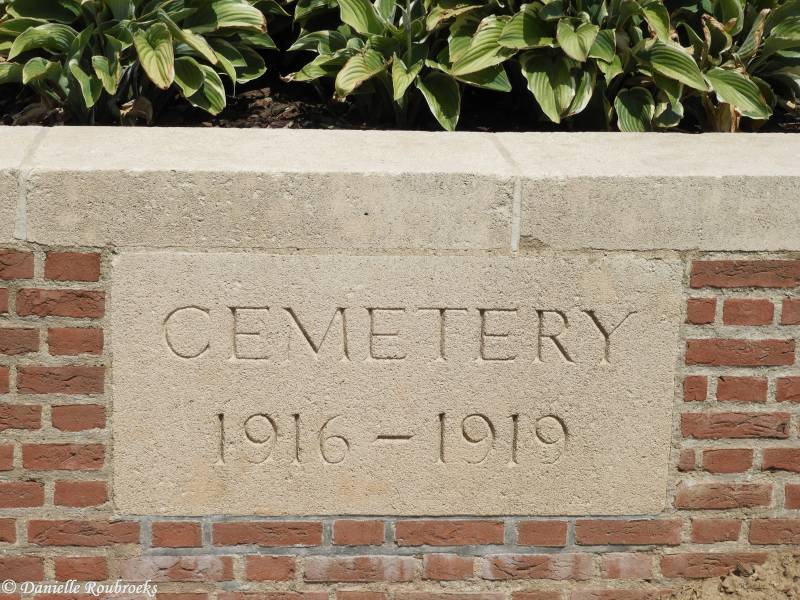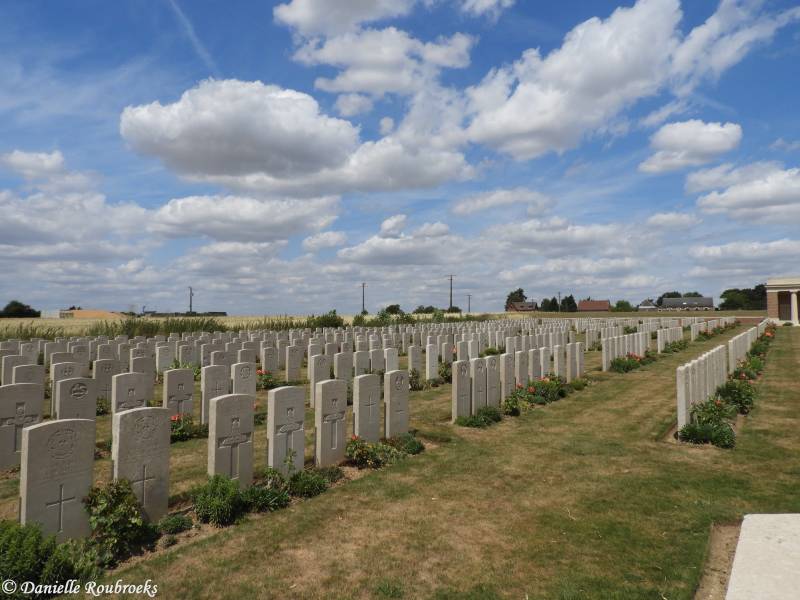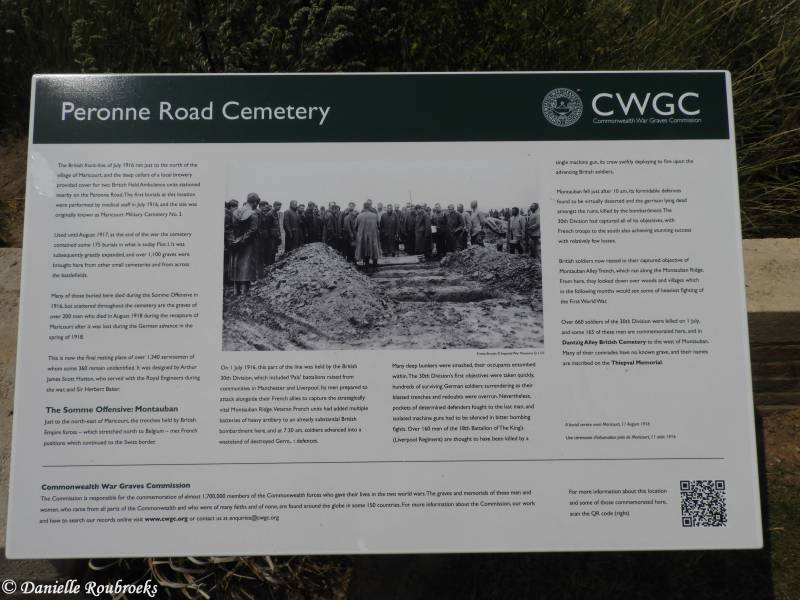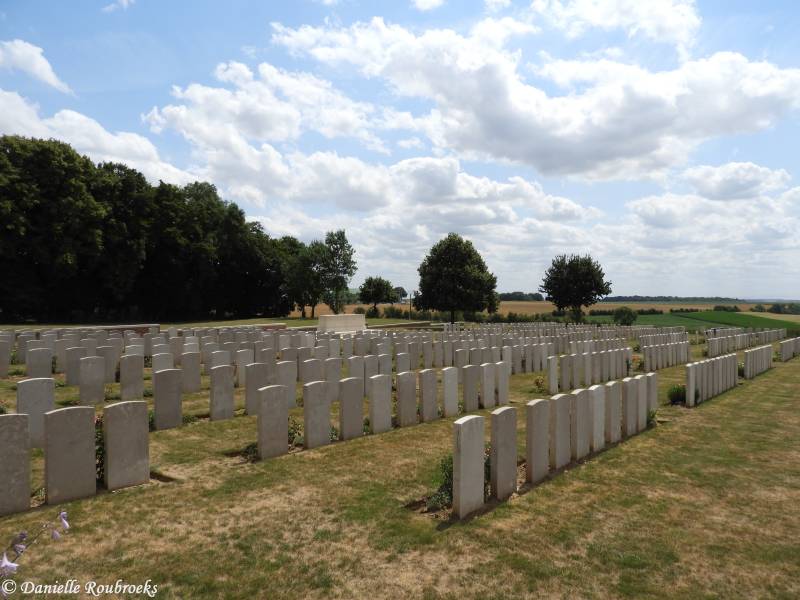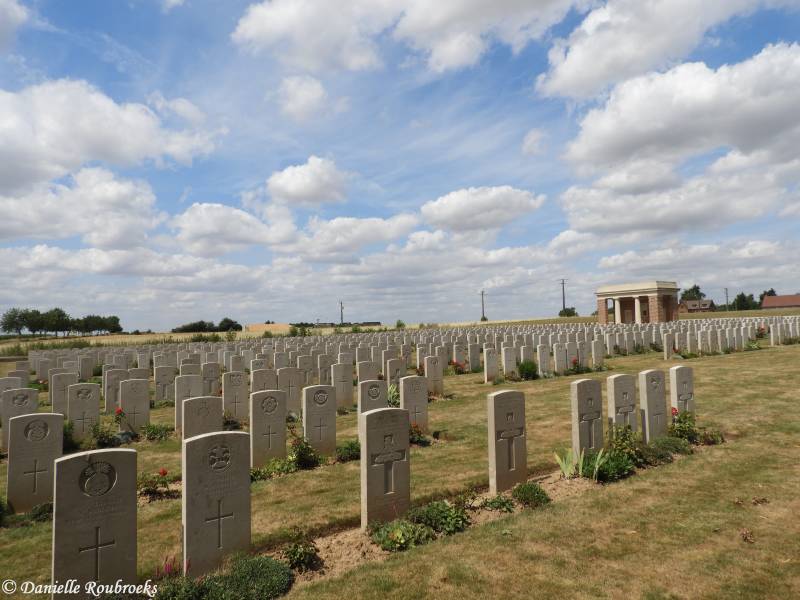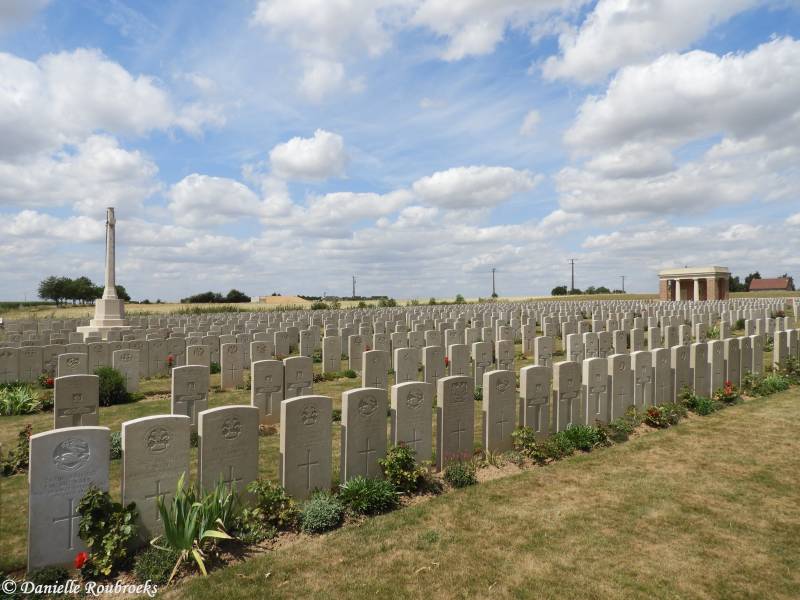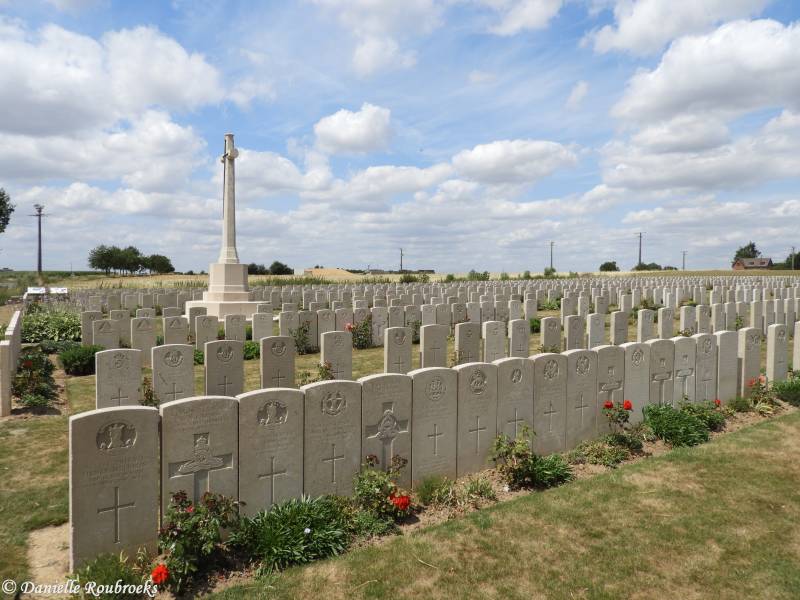Peronne Road Cemetery, Maricourt
Historical Information (Source: CWGC)
Maricourt was, at the beginning of the Battles of the Somme 1916, the point of junction of the British and French forces, and within a very short distance of the front line; it was lost in the German advance of March 1918, and recaptured at the end of the following August. The Cemetery, originally known as Maricourt Military Cemetery No.3, was begun by fighting units and Field Ambulances in the Battles of the Somme 1916, and used until August 1917; a few graves were added later in the War, and at the Armistice it consisted of 175 graves which now form almost the whole of Plot I. It was completed after the Armistice by the concentration of graves from the battlefields in the immediate neighbourhood and from certain smaller burial grounds.
There are now 1348, 1914-18 war casualties commemorated in this site. Of these, 366 are unidentified and special memorials are erected to 26 soldiers from the United Kingdom known or believed to be buried among them. Other special memorials record the names of three soldiers from the United Kingdom, buried in other cemeteries, whose graves could not be found. The cemetery covers an area of 3,787 square metres and is enclosed on three sides by a low red brick wall.
Served with
- United Kingdom (934)
- South African (34)
- Australian (14)
- Canadian (1)
Served in
- Army (980)
- Air Force (2)
- Navy (1)
VICTORIA CROSS
Lieutenant Colonel William Herbert ANDERSON - 12th Bn. Highland Light Infantry
Died 25 March 1918 Age 36
Country of Service: United Kingdom
Awards: Victoria Cross
Citation
An extract from the "London Gazette," dated 30th April, 1918, records the following:-"For most conspicuous bravery, determination, and gallant leading of his command. The enemy attacked on the right of the battalion frontage and succeeded in penetrating the wood held by our men. Owing to successive lines of the enemy following on closely there was the greatest danger that the flank of the whole position would be turned. Grasping the seriousness of the situation, Colonel Anderson made his way across the open in full view of the enemy now holding the wood on the right, and after much effort succeeded in gathering the remainder of the two right companies. He personally led the counter-attack and drove the enemy from the wood, capturing twelve machine guns and seventy prisoners, and restoring the original line. His conduct in leading the charge was quite fearless and his most splendid example was the means of rallying and inspiring the men during the most critical hour. Later on the same day, in another position, the enemy had penetrated to within three hundred yards of the village and were holding a timber yard in force. Colonel Anderson reorganised his men after they had been driven in and brought them forward to a position of readiness for a counterattack. He led the attack in person and throughout showed the utmost disregard for his own safety. The counter-attack drove the enemy from his position, but resulted in this very gallant officer losing his life. He died fighting within the enemy's lines, setting a magnificent example to all who were privileged to serve under him."
Grave Reference: II. G. 36.
(Source: Wikipedia)





